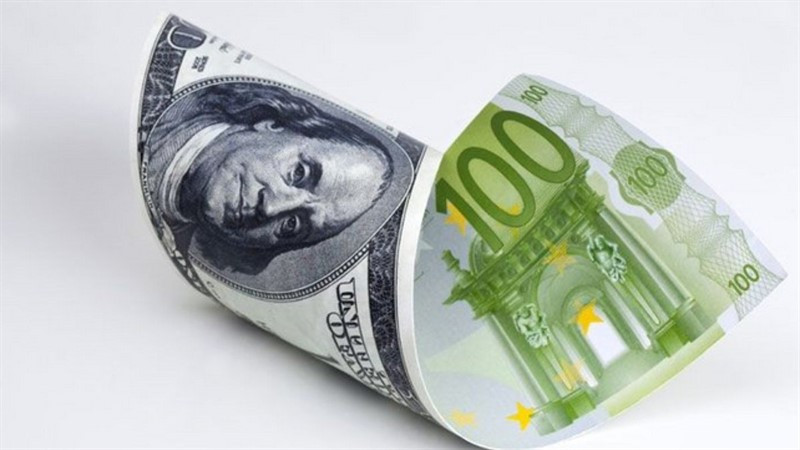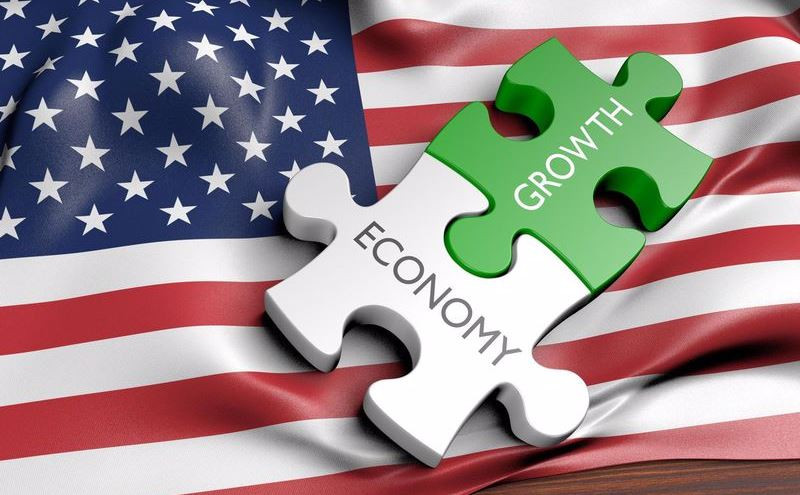
The greenback started the new week on a minor note. On Monday, the US currency continued to weaken against its main competitors, including the euro, as the prevailing risk appetite in market sentiment undermined demand for protective assets.
Investors' adjustment of positions before the end of the month increased the negative momentum for USD.
As a result, the dollar sank 0.3% to 101.44 and showed a decline for the fourth consecutive session.
Taking advantage of the broad weakness of the greenback, the EUR/USD pair is one step closer to recording its first winning month this year. The day before, it reached a five-week high of 1.0786 before correcting to 1.0777.
The dollar has risen almost continuously against the euro since January. At the same time, the growth of USD against EUR turned out to be particularly strong in April, when expectations regarding the further course of the Federal Reserve's monetary policy reached their peak.
Fears about a slowdown in the global economy have become so great that even gold has faded in the eyes of investors who rushed into the US currency, seeing no other alternatives.
Fears that the EU is threatened by the energy crisis and the negative consequences of the slowdown in China's economic growth caused by lockdowns against the next outbreak of COVID-19 in the country added fuel to the fire of the decline of the EUR/USD pair.
However, already in early May, the rate of decline of the main currency pair slowed down, and after touching five-year lows around 1.0350 in the middle of this month, it completely returned to an upward trajectory. Since then, the euro has not only been able to recoup its recent losses, but also came out positive against the US currency, which retreated by almost 3% from the two-decade high reached earlier just above 105.00 points.
What has changed the balance of power in the EUR/USD pair and led to the weakening of the dollar over the past few weeks?
First, the European Central Bank has indicated that it is joining the campaign to tighten policy.
Secondly, the Fed has signaled that it remains flexible and may suspend interest rate hikes later this year.
At the same time, some FOMC officials wondered if inflation had reached its peak.

Recall that in April, the consumer price index in the United States rose by 8.3% Y/Y after an increase of 8.5% in March.
A separate report reflected that the Fed's preferred inflation assessment tool – the basic price index of Americans' personal consumption expenditures – was 5.2% Y/Y last month, compared to 4.9% in March.
Such data, following the publication of the minutes from the Fed's May meeting, became a sigh of relief for investors who were preparing for the worst.
The US stock market was filled with optimism, as a result of which the S&P index closed last week with an increase of more than 6%.
Futures on the main US stock traded mainly in the green zone on Monday, although US exchanges were closed due to the commemoration of Memorial Day. Amid reduced liquidity, the greenback continued to incur losses and reached a five-week low in the area of 101.30.
The US currency tried in vain to find bulls amid an increased appetite for risk, which was facilitated by positive news from China about the weakening of measures to combat COVID-19.
Shanghai said on Sunday that restrictions on businesses will be lifted from June 1, while Beijing has again allowed the operation of part of public transport, as well as some shopping centers.
The dollar managed to find the ground under its feet only after a member of the Fed's Board of Governors, Christopher Waller, said that the central bank should be ready to raise interest rates by half a percentage point at each meeting until inflation is decisively curbed.
In recent weeks, the greenback has suffered due to the fact that the focus has shifted from higher inflation in the US and the Fed's further increase in borrowing costs to concerns that tightening monetary policy will put pressure on the economy.
The Fed will have to choose between two policy mistakes, said Mohammed El-Erian, chief economic adviser at Allianz. According to him, the central bank, on the one hand, risks provoking a recession, and on the other hand, it may prolong inflation until 2023.
"I think the time for a "soft landing" has passed," the analyst said.

The well-known American economist Nouriel Roubini also does not believe in the "soft landing" that Fed Chairman Jerome Powell and his colleagues have promised.
"The necessary degree of normalization of monetary policy will inevitably lead to a "hard landing" in the form of recession and rising unemployment. Thus, the "soft landing" scenario looks like wishful thinking," he said.
One of the likely scenarios, according to Roubini, is that the US central bank will back down as soon as it sees the price of a real reduction in inflation. The result will be stagflation, i.e. a slowdown in economic growth against the background of high price pressure and the lack of a benchmark for inflation expectations.
For inflation to slow down, the economy must weaken, Bank of America analysts say.
The markets expect in vain that the Fed will back down at the first signals of a weakening of the US economy, they believe.
"As the market begins to put a stagflation scenario in prices, the prospects for risky assets remain difficult, which is likely to continue to support the dollar," Bank of America said.
According to the forecasts of Capital Economics, the economic downturn in the United States will be observed in the second half of this year, and the most vulnerable sectors will be the production of durable goods, equipment, as well as real estate.
However, even in such conditions, the greenback is able to strengthen, taking advantage of the status of a safe haven asset, and also due to the fact that the impact on the US economy will be relatively weaker than on other developed economies.
Money markets have recently somewhat reduced their estimates of how high interest rates will be in the United States.

The reduction of rates on the aggressive tightening of the Fed's policy acts as a headwind for the USD and favors US stocks.
There is reason to believe that any upward movement of stock indices will be short-lived, since the market remains bearish.
Signs of slowing inflation provoked a surge of optimism in the market. However, a PCE above 8% can be a tough nut to crack.
Inflation data has not yet shown a convincing decline compared to the levels that unnerved Fed officials and caused comparisons with the inflation shocks of the 1970s and early 1980s.
For example, in 1974, the Fed continued to raise rates even as the recession began, as it tried to get closer to the inflation rate. As a result, a terrible bear market was formed, which was interspersed with exhausting temporary rallies, two of which reached 10%, two 8% and two 7%, and each of them soon ended. It took 20 months before the low was reached.
After the stock has more than doubled in the previous two years, a market drop of more than 20% seems quite likely.Thus, we will see a drawdown to 3600 for the S&P 500, and possibly even lower, this year. At the same time, the exit to the 3200 and 3300 levels should also not be excluded.
As for the dollar, it maintains an upward trend, although it has sunk for the second consecutive week.
The USD index is on track to fall by more than 1.5% in May, but it has grown by almost 6% since the beginning of the year.
It is assumed that the greenback will remain constructive while trading above the 200-day moving average at 96.85.
Tracking the fading demand for risk, which prevailed in the markets at the beginning of the week, the US currency found support in the area of 101.30, pushing off from which it jumped above 102.00 before retreating somewhat.
"The dollar's rebound on Tuesday suggests better support for the USD index around its 50-day moving average, which it has been testing over the past few sessions," Scotiabank strategists said.
The USD index has not closed below its 50-day moving average since mid-February, but has approached it over the past few sessions.
"We believe that the US dollar is unlikely to rise significantly, and we still view the price movement as a reflection of the early stages of a broader reversal of the recent bullish trend in USD," Scotiabank said.
Reflecting the weakening of risk sentiment, the US stock market opened lower after a long weekend.

The hawkish statements of Fed representative Christopher Waller have shaken the confidence of market participants that the central bank will abandon the aggressive pace of policy tightening.
Data from China added to the negative, which showed that in May business activity in the manufacturing and services sectors of the country continued to remain in the decline zone in May.
These data served as a reminder that the difficulties faced by the country's economy are much deeper than in 2020, when the pandemic was just beginning to gain momentum. So the recession may be more protracted, which can seriously slow down global economic development.
Investors also reacted to the news that the EU has reached an agreement on the introduction of a partial oil embargo, which will affect oil supplies by sea from the Russian Federation. This supports the rally in commodity prices, which in turn contributes to a further acceleration of inflation.
Eurostat just reported that the consumer price index in the eurozone rose in May to a new record level of 8.1% Y/Y against 7.4% in April.
An increase in inflation is usually considered a harbinger of normalization of monetary policy. However, the current situation puts the
ECB in a difficult position in determining the pace of tightening amid increased uncertainty about the economic outlook.
ECB Governing Council member Ignazio Visco said on Tuesday that the central bank will have to raise rates gradually.
"Monetary policy cannot withstand the rise in commodity prices," he said.
Against this background, the EUR/USD pair lost the points gained on Monday and fell by more than 90 points from the last closing level of 1.0777, before slightly reducing losses.
However, it has continued to trade above the upward trend line since mid-May, which currently runs at around 1.0700. As long as this support remains unbroken, the bears can take a wait-and-see position. However, if this mark turns into resistance, the levels of 1.0680 (50-day moving average), 1.0660 and 1.0620 (200-day moving average) may come into play.
On the other hand, the resistance is at 1.0740 (20-day moving average), and further – at 1.0760, 1.0780 and 1.0800.
The euro's decline on Tuesday may simply be of a corrective nature, as it is approaching the level of $1.08, say Scotiabank analysts, who believe that the EUR/USD pair may rise to 1.1000 in the medium term.
"The euro continues to note rising highs and rising lows, which support a breakthrough of $1.08 in the near term. However, the inability to break through this mark makes a correction possible," analysts noted.
"Persistent inflation and a stable eurozone economy in the face of high energy prices may continue to support the likelihood of an increase in interest rates in the region by 50 bps. This could lead to a strengthening of the euro to $1.10 in the medium term, which seemed very unlikely a few weeks ago," they added.
 English
English 
 Русский
Русский Bahasa Indonesia
Bahasa Indonesia Bahasa Malay
Bahasa Malay ไทย
ไทย Español
Español Deutsch
Deutsch Български
Български Français
Français Tiếng Việt
Tiếng Việt 中文
中文 বাংলা
বাংলা हिन्दी
हिन्दी Čeština
Čeština Українська
Українська Română
Română

